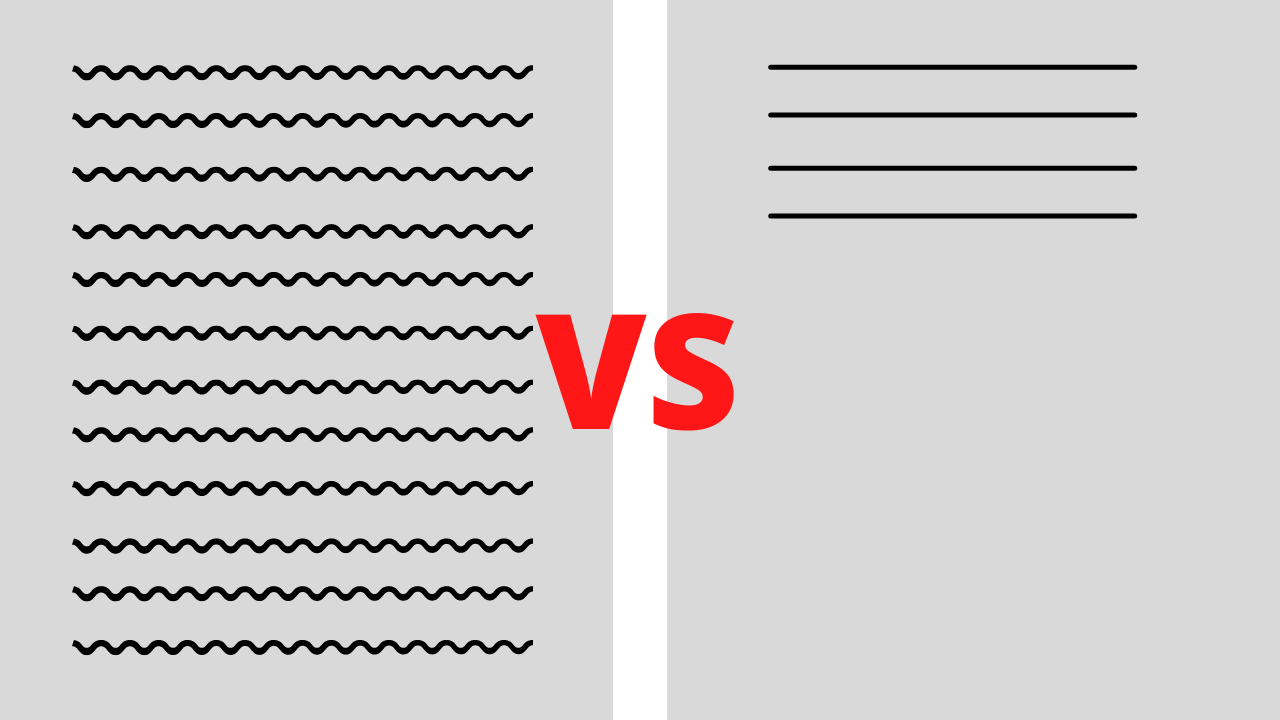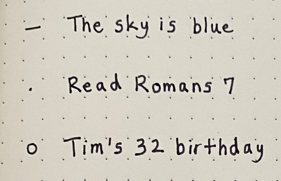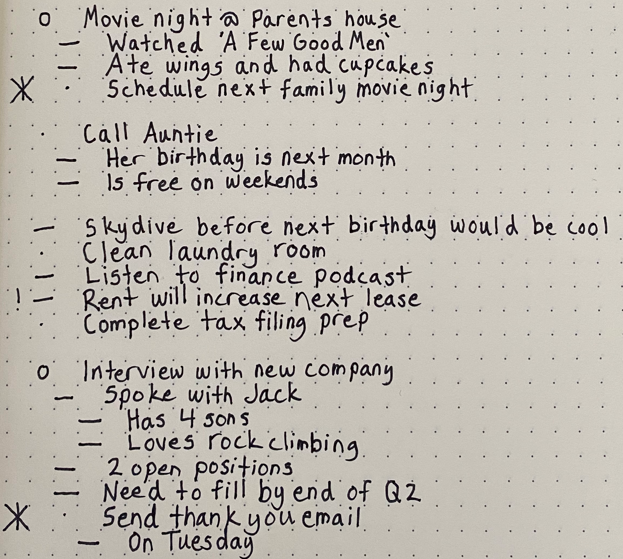How to journal QUICKER and NEATER | A guide to rapid logging

It's time to get ready to file taxes so you begin sift through the Mt. Fuji pile of envelopes on the kitchen table, coffee table and your desk.
Feelings of frustration start to climb into your brain as you try to find your employer's tax documents. More time goes by and now overwhelm sets in because you don't want to miss the filing deadline.
These feelings of frustration and overwhelm can surface when we have an unorganized pile of envelopes to sort through to meet a deadline. But these same feelings can also arise when we need to review our journal entries.
Since many of us were taught that we should take notes but we weren't taught how to take notes - we can easily default to transcription or traditional long form journaling.
Each of these methods have their place, but can take long at times and be difficult to review later, hence the feelings of frustration and overwhelm.
Yep, there is! And this approach to note taking is called rapid logging.
Rapid logging defined
As the name suggests, rapid logging helps note takers to quickly and neatly capture notes.
Instead of filling pages with sentences in a free form fashion, rapid logging uses short, objective entries to capture notes.
This approach lessens the amount of words that are used but also formats notes in a way that is easy to review later.

Bullets - Short and to the point
The quick objective entries are called 'bullets' - and for good reason because they are short and to the point.
When it comes to rapid logging, there are 3 standard bullet types: notes, tasks and events.
Notes - Information to remember
Facts, descriptions or ideas. These are the bullets that we identify as notes and are preceded by a dash. But what gives the note bullet type its super power is how this bullet is captured.
Instead of passively transcribing notes from a presentation or copying exactly what the speaker is saying, note bullets distil the most important information.

Powerful notes that can be quickly read in the future are captured with less words. This does take time and practice but yields great benefits.
Tasks - Action items
Assignments, follow-ups, things to do. These are the bullets that we identify as tasks which are preceded by a dot.
Just like notes, the task bullets are short and to the point. They don't need to be overly detailed because the intent is to capture the action item.

Please keep this in mind - if writing the task takes more time than it would take completing the task, don't write it down. Do the task!
It can feel good to write down our tasks, but what is more important is actually completing them.

Events - Experiences to remember
The past or future. The good or the bad. These bullets are identified as events and are preceded by an open circle.

When should you use event bullets? If you are using your journal for planning, this bullet type comes in handy. Or you could use this bullet type to capture the moments that have some significant emotion (good or bad) tied to it.
Brains are great but their storage capacity has limitations. So capturing a quick event note that says "Coffee date with wife" or "Interview with company" could be what we need to help trigger our brains to recall wonderful (or not so wonderful) experiences.
Nesting and spacing
Patterns help our minds to process information. So if we leverage patterns in our note taking, it will help us with review. We can leverage patterns by keeping the space between the bullet identifiers and their descriptions consistent.

This is easier to achieve with a dotted or grid journal but can also be accomplished using plain or ruled journal as well.
Nesting
In addition to spacing, the 3 bullet types can be combined using nesting.
Grouping related child bullets together underneath a parent bullet can help a lot with readability.
To properly nest bullets, just indent as needed.

Signifiers
Even with a full page of perfectly rapid-logged notes, there are some bullets that need to standout from the rest.
The traditional method is to use a yellow highlighter but with signifiers, this becomes a thing of the past.
Signifiers are single character markers use sparingly in a journal to specify some level of importance.

Signifiers can be a letter, symbol, foreign letter or even a custom symbol.
They are placed before a bullet and again are used sparingly so that they stand out.
Rapid logging isn't limited to journaling in a notebook. Use this approach on a notepad, whiteboard or even in your favorite note-taking app on your phone.
✍🏾✍🏾✍🏾